How to know the right paintbrush to pick as an artist? A few weeks ago, I made a Beginner’s Guide for the different art paints that exist out there and what makes each one of them suitable for a different project.
My readers seemed to enjoy that article and found it very helpful, and that made me write this article about different art brushes and the ones you really need in your collection.
So the way I mentioned in the art paint article, every paint is suitable for a different project. You need to know that paint brushes too, depend on the paint you are using and the desired shapes and lines to paint.
For this article, I will share with you a detailed response to How to know the right paintbrush to pick as an artist as well as brushes I have personally used for reference.
This page contains affiliate links, meaning I earn a commission if you use those links. Please read my Disclosure for more details.
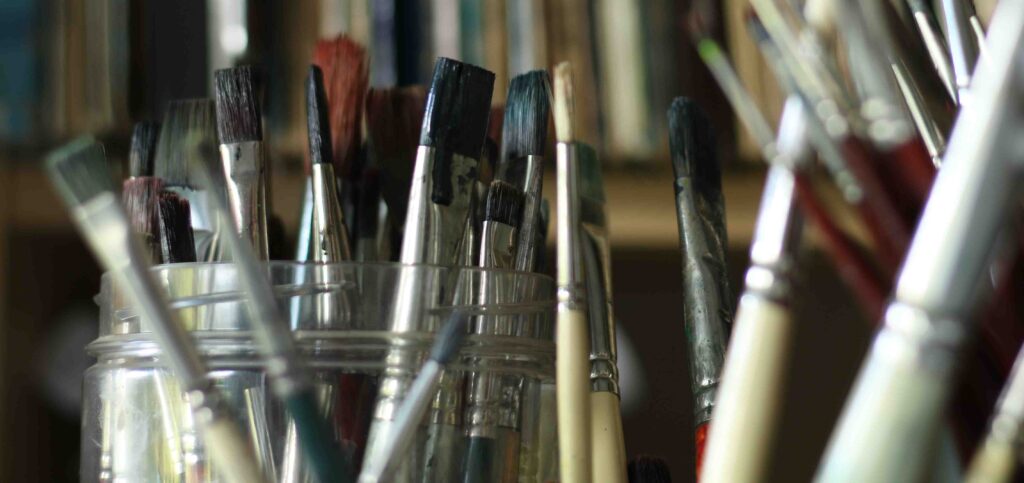
Related article: Do I need to buy expensive art supplies to make great art?
What do you need to know about paintbrushes?
How to know the right paintbrush to pick? You need to learn two things about a brush before you go out and buy it. Its anatomy and what it was made for.
Let’s start from a starting point. As an artist, let’s cut the anatomy of a paintbrush down.
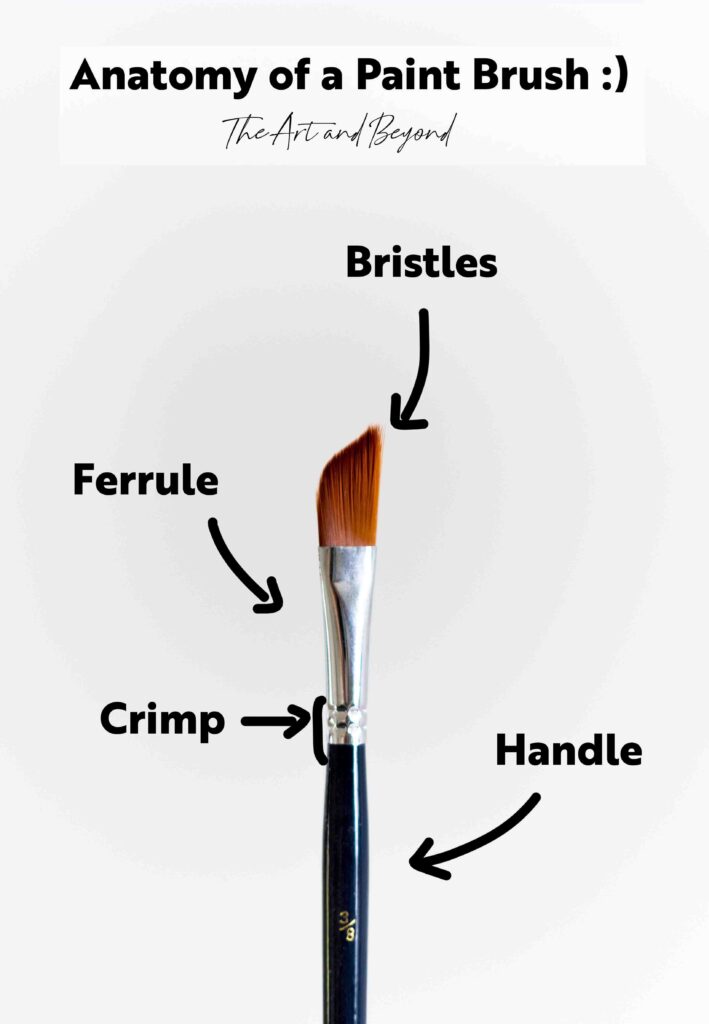
1- The anatomy of a paintbrush
Bristles: So the bristles are the hairs at the very top/head of the brush. These bristles could either be synthetic (fake hair) or made out of real animal hair.
Ferrule: The metal part of a paintbrush that holds the bristles inside. A ferrule could be either round for rounded head brushes or flat for flat brushes.
Crimp: So the crimp is the little part at the bottom of the ferrule that links both the handle and the ferrule.
Handle: The part where we hold the brush from. Handles are either made out of plastic, wood, or metals. They could also be either short or long.
2- What is the paintbrush made for?
Brushes come in different sizes, different types of bristles, different lengths, and other details for a reason. Thus, the best paintbrush for an artist is the one that matches their technique and desired outcome. To know the right Paintbrush to pick, you have to take these things into consideration.
Choosing my paintbrush based on bristles, Which bristles to choose?
Give the paintbrushes the bristle test when deciding which ones to buy from a craft store. Run your hands through the hairs and pull gently on them. If they break or fall, that brush isn’t for you. Otherwise, you’ll have hairs going onto your canvas while painting.
- The bristles could be either synthetic or animal-made. The difference between both is that animal hairs hold more water than synthetic brushes. So it would be great for watercolor, paint washes, thinned paint…
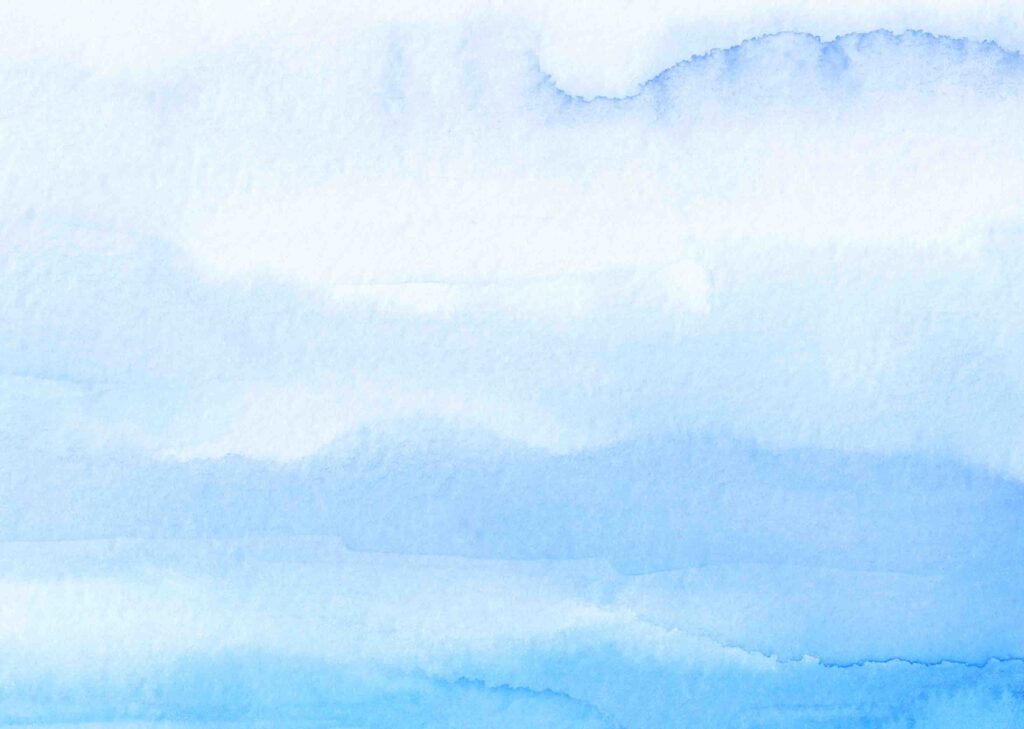
- The paintbrush bristles could also be either soft or coarse. The difference is that a coarse brush or bristle brush is great for applying thick paint, covering bigger areas faster, painting rough edges, or techniques like broken color. A soft brush on the other hand would be great for blending, painting details, and softer edges.
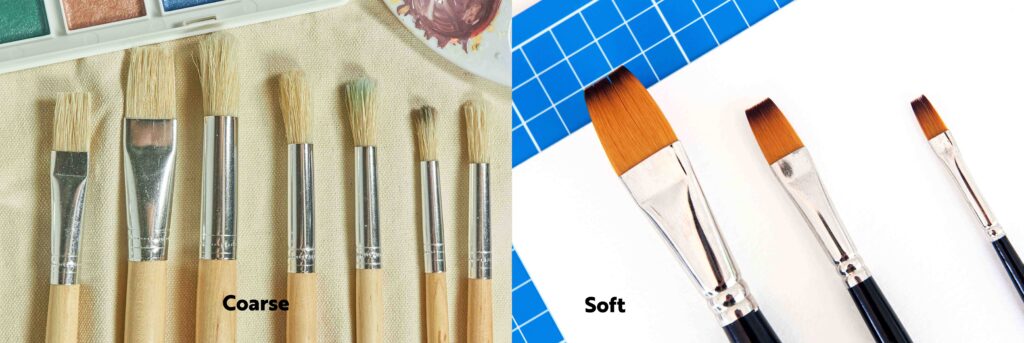
Choosing my paintbrush based on the ferrule?
For the ferrule part, I want you to always make sure you’re getting a brush with a ferrule that won’t rust. Because rust makes it weak and prone to breaking.
Choosing my paintbrush based on the handle? Which hand to choose?
So handles are either long or short. made of wood, plastic, or metal.
If you are mostly painting on paper, I would highly recommend you get brushes with shorter handles, and if you work with canvas, then your best option is to get brushes with longer handles. The difference is the amount of control you want to have on your brush and on your artwork as well. The farther your hand is from your artwork, the softer you paint and the less control you have.
A second point is the material of the handle. If your paintbrush handle is made out of wood, it will expand with the use of water, and once it dries, it shrinks back. This movement will cause the handle of your brush to move out of the ferrule and you end up with something like this.
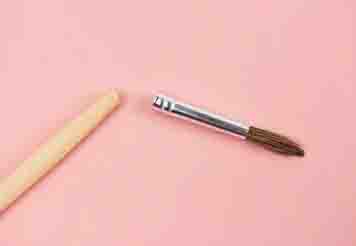
If you buy a paintbrush whose handle is made out of metal, make sure it doesn’t rust. And it is for this reason that I find the best paintbrushes for artists are the ones with plastic handles because they are the most durable of the three.
Learn the different kinds of brushes to know the right Paintbrush to pick
- The big flat paintbrush
Great for covering bigger areas in less time, holds more paint, great for blending edges.
- Mop brushes
They basically look like mops, and they hold a lot of water. They are often used for blending, applying color washes, and more watercolor techniques.
- Flat brushes
These are the ones if you want to paint perfect lines, edge geometric shapes, blend, fill in areas…
- Angled brushes
Good for painting angles and getting to pointed areas.
- Round brushes
These ones are great for painting dots, details, and inconsistent lines, but you can never get a perfect line with them.
- Filbert brushes
Flat at the bottom and rounded at the tip, these are great for painting round shapes like clouds and flowers.
- Rake brushes
Could be used to paint grass or lines with gaps in between.
- Liner brushes
Long and thin, good for signatures, and long lines.
- Fan brushes
Great for blending, could be used to paint trees, grass, and patterns.
Best paintbrushes for artists to invest in?
There are paint brushes brands I’ve been using for years and haven’t faced any problems with. If you make sure you take into consideration all the previous details I listed above, you can go out there and get your hand on any brush basically and I’m sure you’ll make a good purchase. I get mine from Blick Art Materials.
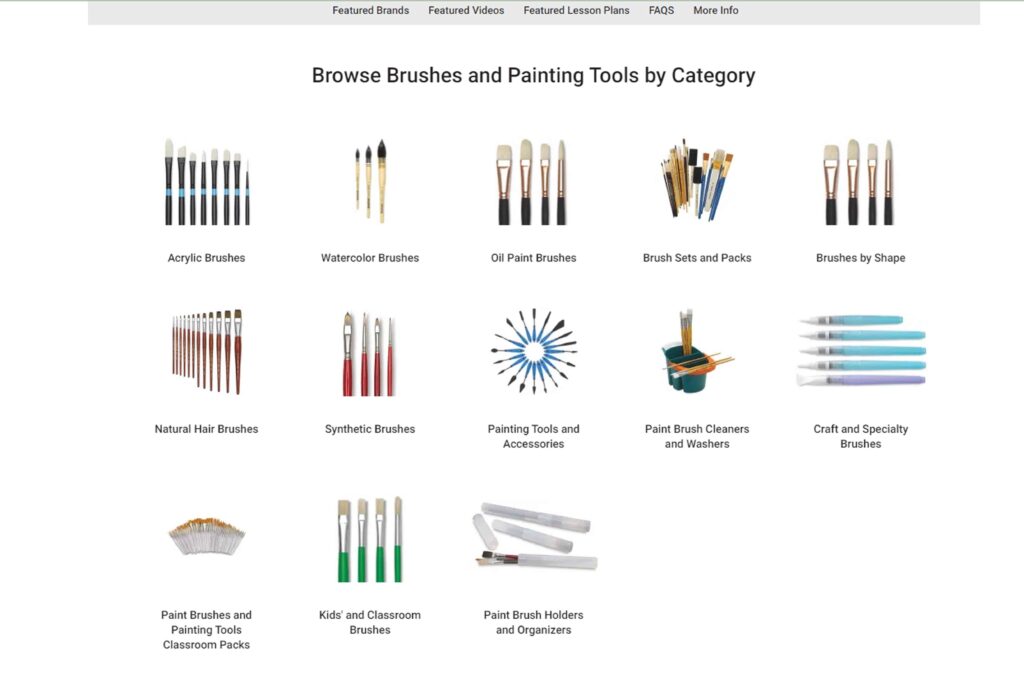
You can see that over on Blick Art Materials, the brushes are already sorted by what they are made for which is perfect for you if you’re a beginner. These are some of my favorite picks.
Best brush set for watercolor
This is the Da Vinci Synthetic Watercolor brush set. You can get them here.
You can also watch the demo of each brush on YouTube for maximum info and to pick the brushes you feel like you need the most before you make your purchase.
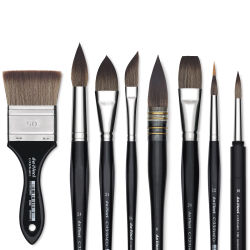
You can also get one of those affordable water brushes, where you fill it with water and keep painting with it. Get the Caran d’Ache Museum Aquarelle Waterbrush here.
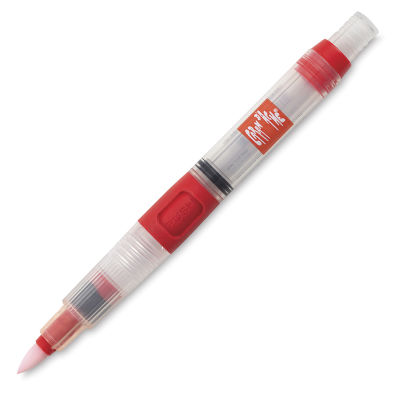
Best paintbrush set for acrylics
Since both acrylics and watercolors are water-based paints, I wouldn’t mind using the same set of brushes. But for the best experience, I recommend you get synthetic brushes for acrylics and natural hair ones for watercolor because the synthetics hold less water. This set by Da Vinci is one of the best synthetic sets to ever exist. Get your Da Vinci Nova Synthetic Brushes and Sets here. And watch the YouTube Demo video as well.
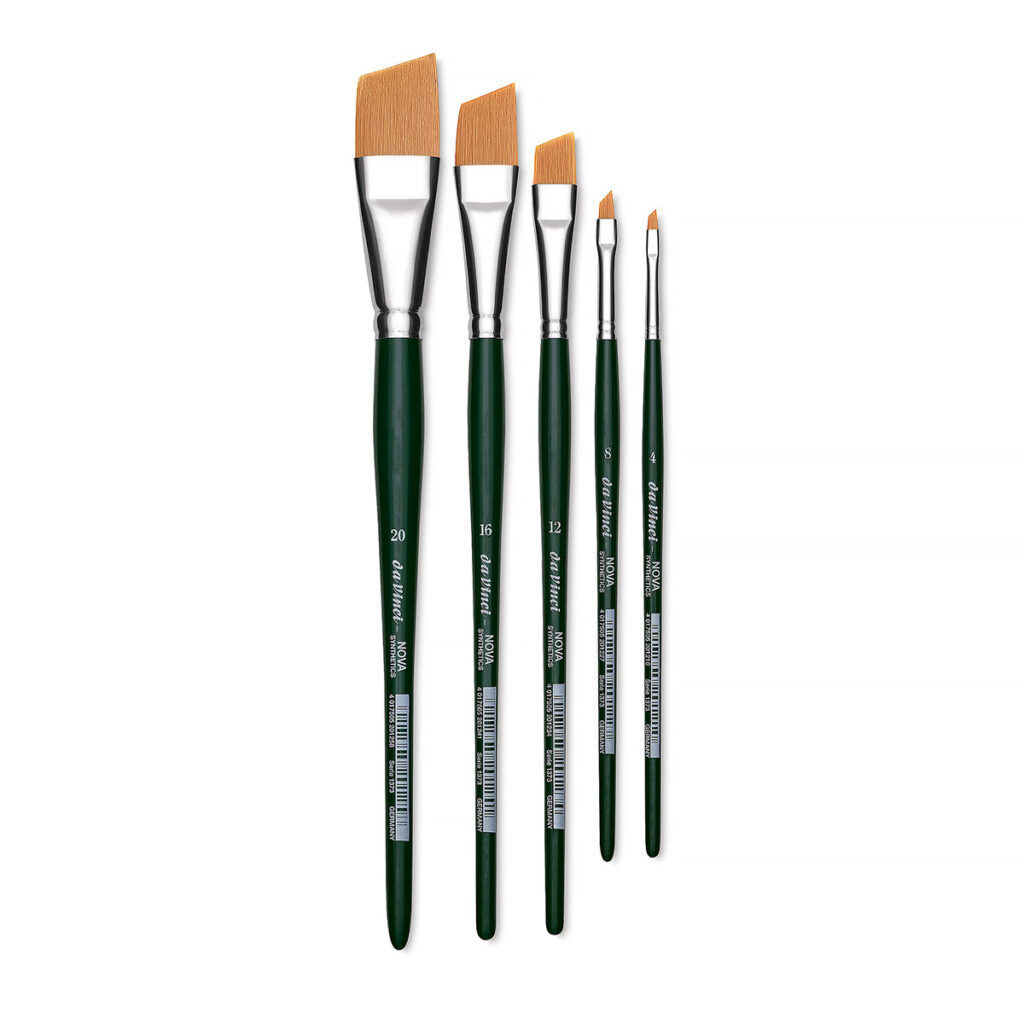
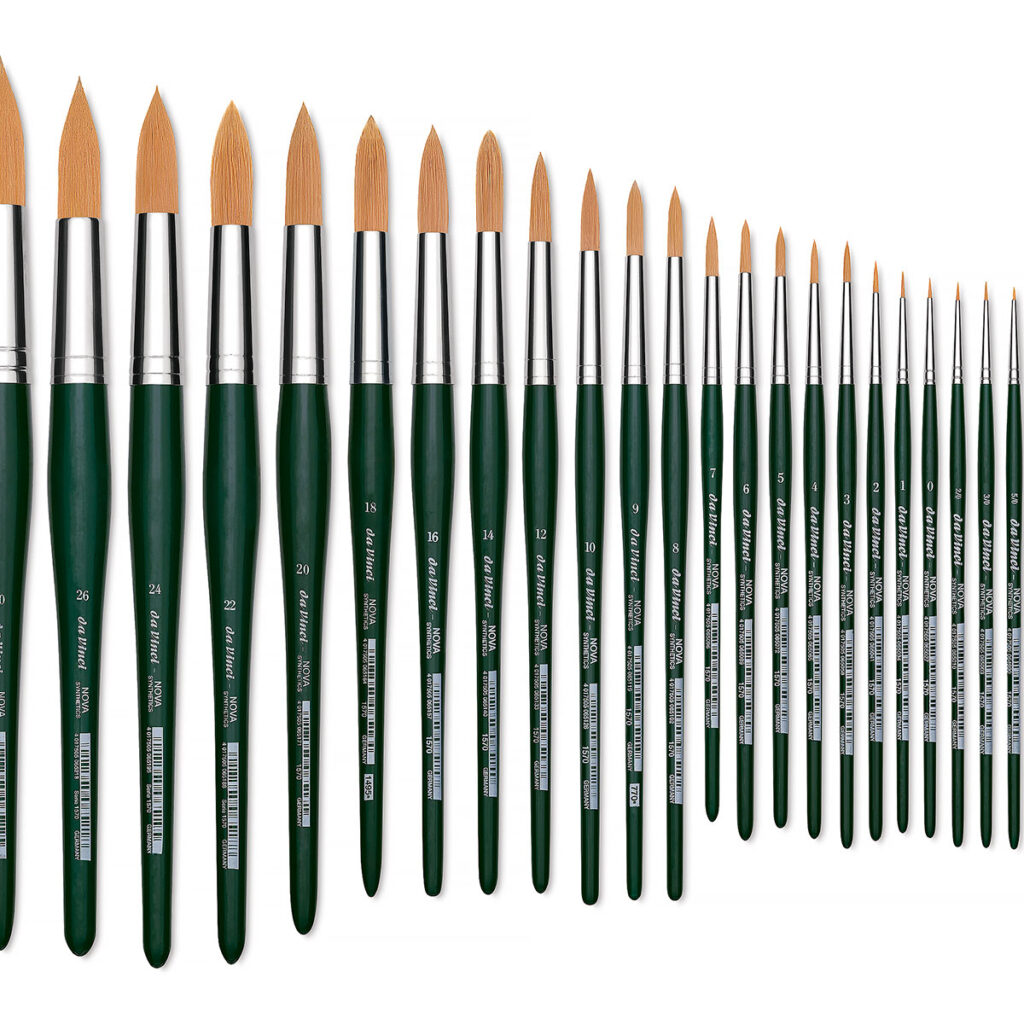
Best brush set for Oil paint
If you want my advice for oil paintbrushes, think of the process by which you would normally create an oil painting. The first layer is all about painting color blocks and covering as much surface as possible is the least amount of time. So a big bristle brush would do the job for you.
This Bob Ross Synthetic Goat Hair Blender Brush is one of the greatest out there and it’s pretty affordable.
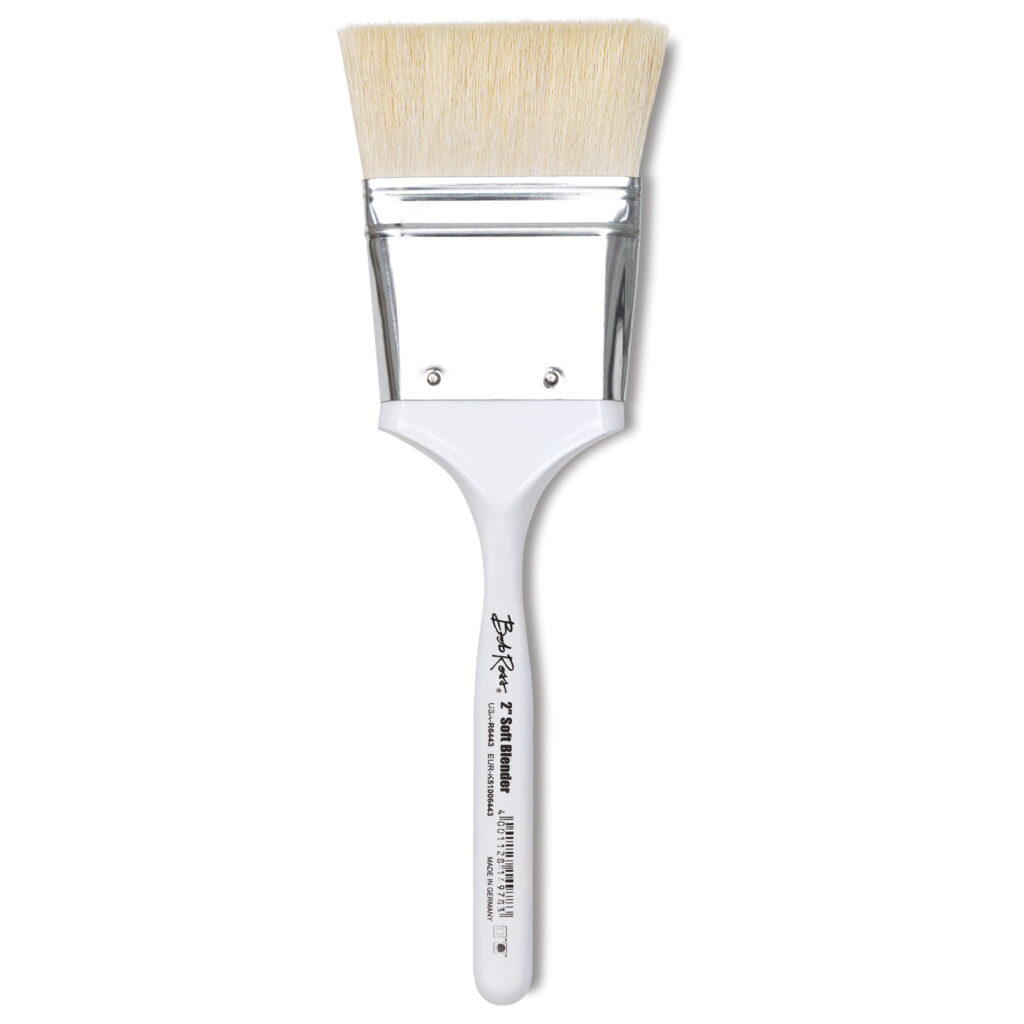
Your next step in painting with oil, would be to model and paint some surfaces and textures, we’re not yet into the detail part so we need medium-sized brushes. I recommend you opt for flat brushes, filberts, and angled ones. For the bristles, I would go with synthetic for more stiffness, blending, and coverage as well as pushing the paint into the canvas. This Da Vinci set is a great one to experiment around with and it would last you a long while.
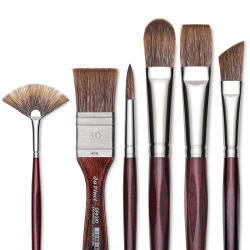
Then comes the detail part. Of course, a nice set with the finest brushes that offer controlled motion and movement would be a great investment for your painting sessions. These are the Princeton Mini Detailer Synthetic Brushes. The handles on these ones are non-slip, comfortable to hold, and offer full control. Highly recommend.
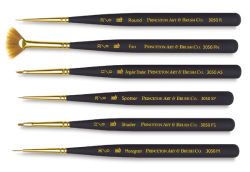
How to take care of my paintbrushes?
If you invest in the right set of brushes and wish for them to last so you can keep building your brush collection, follow these steps:
- Don’t ever leave your brushes in water for long, head down. This will gets the water to go between the bristles and the ferrule, dissolve the glue that’s holding both together and you end up with a brush that sheds hair.
- Don’t leave paint on your brushes. The brushes will get crusty and dry, and then you will apply pressure on the bristles to get that paint out which will make them break and shed again.
- Always Get the paint off first in a paper towel, then wash your brush with water, then dry it again in your paper towel. Through this process, you will be sure that your brush is clean and that you have no paint residue left in the bristles.
- Don’t use soap on your brushes unless you mix it with a bit of conditioner, soaps could be rough and dry.
- Reshape the bristles on your brushes after washing and drying them. That will bring them back to their initial state. If they don’t bounce back to what they were like at first, you know that the set isn’t that great.
- Leave your paint brushes to dry flat before you put them back in your cup or brush holder, you don’t want any water running down from the top of the bristles to inside the ferrule.
Conclusion:
I hope you got your answer for How to know the right Paintbrush to pick and found what you were looking for about art paintbrushes in this guide. Keep in mind that even if you use the same brush someone else uses, you might not get the same look or outcome. Painting is not about brushes, paints, or any art material at all. It’s about the technique, the amount of time you invest in painting, your experience, and your knowledge as well. Enjoy your sessions <3



8 Comments